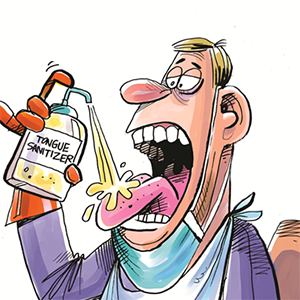These Texas counties have some of the highest STD rates in US, new report says
Published in Health & Fitness
Sexually transmitted infections are on the rise in Texas. And in some parts of the state, the numbers are climbing higher than the national average.
A new report from online healthcare service Invigor Medical based on CDC data offers a closer look at the counties with the highest reported cases and sheds light on what’s driving the trend.
So where does Texas stand overall, and how does Dallas Fort-Worth compare to other high-risk areas?
Here’s what the data reveals.
Texas STI rates
Texas ranks among the top states for newly reported sexually transmitted infections, according to the report by Invigor Medical.
In North Texas, Dallas County stands out, with one of the highest STI rates in the U.S.
While the national ranking places Texas at No. 19 in the study, Dallas County ranks No. 7 nationwide among large counties, with 1,314.5 cases per 100,000 residents.
Two other major metros made the national Top 20. Travis County came in at No. 14 with a rate of 1,160.3 cases per 100,000 people. Harris County ranked No. 17, with 1,041.4 cases per 100,000 people. These counties not only have large, dense populations but also wide disparities in income, insurance coverage, and access to health services.
Here are some fast facts about the most common STIs reported in Texas counties:
—Chlamydia and gonorrhea make up the majority of cases
—HIV and syphilis rates are lower but steadily rising, particularly in metro areas
—Young adults aged 15–29 account for a significant share of new infections
Recent data by STI
Here’s a look at the newly reported cases in several high-ranking Texas counties, according to Invigor Medical’s study:
Dallas County
—Chlamydia: 20,405 cases
—Gonorrhea: 9,362 cases
—Syphilis: 3,483 cases
—HIV: 831 cases
Travis County
—Chlamydia: 9,100 cases
—Gonorrhea: 4,644 cases
—Syphilis: 1,501 cases
—HIV: 209 cases
Harris County
—Chlamydia: 31,014 cases
—Gonorrhea: 11,631 cases
—Syphilis: 6,094 cases
—HIV: 1,321 cases
Why are rates rising?
Several overlapping factors are fueling the rise in STI cases across Texas, according to public health officials and data analysts. They include:
—Limited access to affordable care and regular testing, especially in underserved areas
—Inconsistent or underfunded sex education in schools
—High infection rates among young adults without primary care access
—Stigma and misinformation that keep people from seeking help
—Racial and economic disparities, especially affecting Black and Latino communities
Experts say the combination of social stigma, delayed diagnoses, and fragmented health care services is keeping many cases from being caught early. This also, consequently, increases the risk of spread.
What resources are available for STI support in Texas?
If you think you’ve been exposed to an STI, getting tested early is one of the best steps you can take for your health and for those around you.
Timely testing and treatment can prevent serious health issues and help stop the spread.
Here are some helpful resources across Texas:
—Texas Health and Human Services: Use their online tool to find free or low-cost STD testing near you.
—Dallas County Health and Human Services: Provides STI testing, treatment, and education programs for residents.
—Austin Public Health: Offers a list of clinics and services for STD testing, treatment, and prevention.
—Planned Parenthood of Greater Texas: Offers confidential testing, treatment, and preventive options like PrEP.
Want a closer look at how individual cities across Texas rank?
A previous Star-Telegram report explored the top 100 U.S. cities with the highest STD rates — eight of them were in Texas. From Fort Worth to El Paso, see how urban areas across the state compare.
_____
©2025 Fort Worth Star-Telegram. Visit star-telegram.com. Distributed by Tribune Content Agency, LLC.









Comments